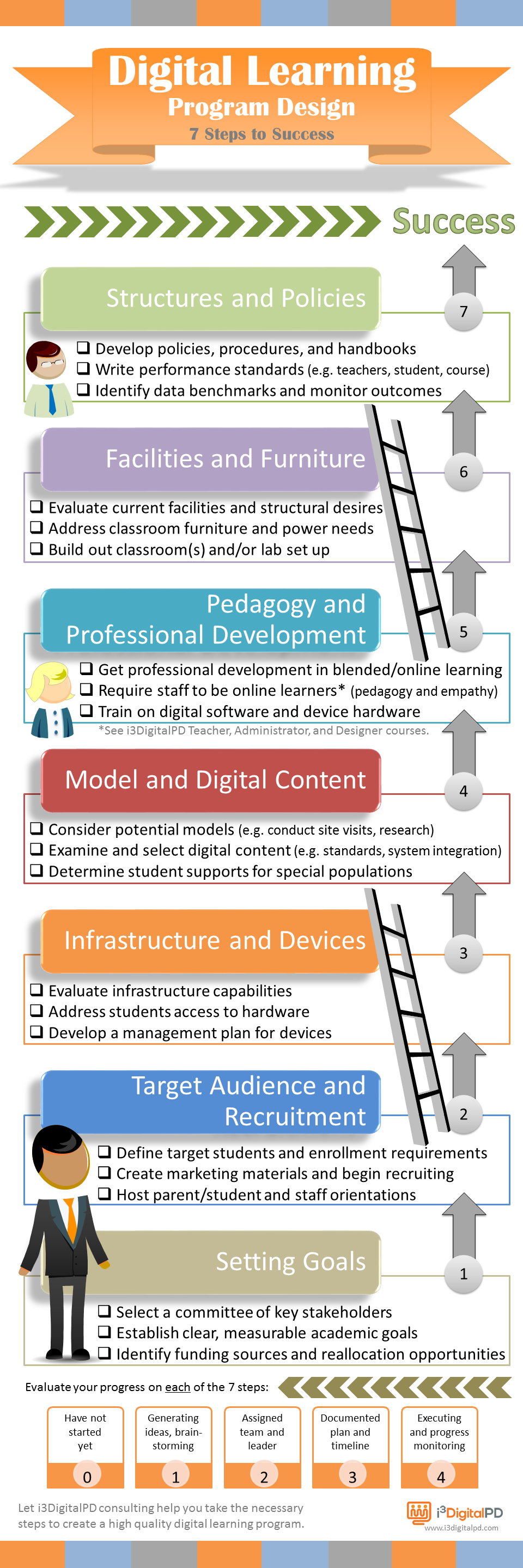Planning for a digital learning program can be overwhelming. There are many things to consider, from content, devices, to staff and facilities, and so much more.
Go back and read the previous sentence. Notice that the items specified are visual, touchable. Too often this is where the planning begins and stalls. After acquiring the “junk and stuff” little investment goes into the necessary steps of building a quality digital learning program that are less visual, but comes at the cost of time and effort, like professional development, planning milestones and benchmarks, or documentation of policies and practices.
Like spokes in a wheel, if the strut is weak or missing, the wheel becomes wobbly and may topple over. So too can a digital learning program if attention is lacking in strategic areas. Having a roadmap or a checklist can guide leaders into investing time and resources strategically. Management and evaluation of the program design process is essential to ensuring that your digital learning program enables students to be successful and excel academically.
Don’t get caught up in the bright colorful furniture, or the sparkling new devices, when you should be focused on operational procedures, or preparing your staff for new pedagogy and classroom instruction.
Successfully implementing a digital learning program requires analysis and thoughtful planning. Knowing all the steps you need to take and having a progress monitoring system in place will keep your team focused. At i3DigitaPD we help schools/districts with the seven steps to program design (see infographic below):
- Goal Setting
- Target Audience and Recruitment
- Infrastructure and Devices
- Model and Digital Content
- Pedagogy and Professional Development
- Facilities and Furniture
- Structure and Policies
Again, if one area is weak, or missing, the program becomes wobbly, loses traction, and may topple over. We have seen schools paint walls, have a fancy logo, buy thousands of dollars in furniture, technology and digital content, that don’t make if far before they begin to flounder, because they spent little time or resources in the non-visual essential items like teacher preparation and establishing performance benchmarks.
When designing a program, it’s important to progress monitor and know where you are in each of the seven strategic areas. Ask yourself, “Where are we in program design?” and assess progress:
- 0 points – Have not started in this strategic area yet
- 1 point – We’re still generating ideas and brainstorming
- 2 points – Assigned a team and leader in this strategic area
- 3 points – The strategic area has a documented plan and timeline of events
- 4 points – Executing the plan and progress monitoring within this strategic area
Don’t get caught up in the “junk and stuff.” Know where you are going and how to get there. Use the infographic below to guide your planning process. And don’t be afraid to ask for help when needed. When travelling an unfamiliar road, it’s wise to have a guide who has been there before by your side. Let i3DigitalPD consulting services help you plan a successful digital learning program.


